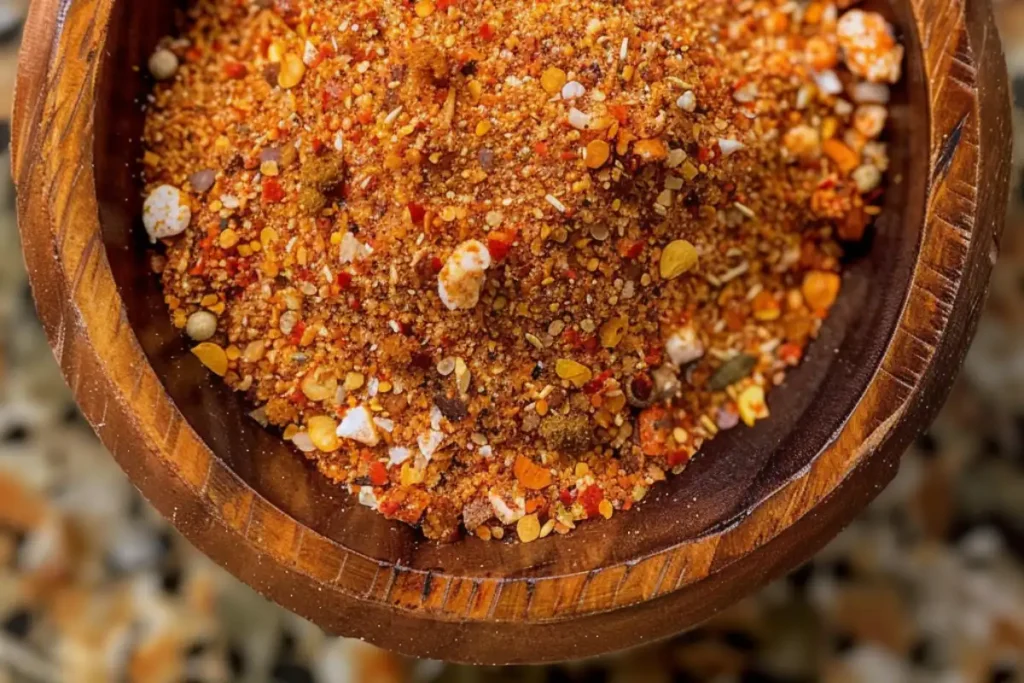There’s nothing quite like biting into a perfectly seasoned Buffalo wing. Whether it’s for a big game day, a casual family dinner, or a fun snack with friends, Buffalo wing seasoning is the key to taking ordinary wings to extraordinary levels. This seasoning blend, with its spicy kick and flavorful depth, has been a favorite in American kitchens for decades. But Buffalo wing seasoning isn’t just for wings—this versatile spice mix can be used in a variety of dishes to enhance flavor and give food that classic Buffalo heat.
The History of Buffalo Wings and Their Seasoning
Buffalo wings were first created in Buffalo, New York, in the 1960s at the Anchor Bar. Teressa Bellissimo, co-owner of the bar, invented the dish by tossing fried chicken wings in a mixture of hot sauce and butter. The result? A deliciously tangy and spicy dish that became an instant favorite.
As demand for wings grew, seasoning blends became more refined, often including smoked paprika, chili powder, and different salts to deepen the flavor. Today, Buffalo wing seasoning remains a staple for creating the perfect wing experience.
Key Ingredients in Buffalo Wing Seasoning 🌶️🧄

Making your own Buffalo wing seasoning at home allows you to control the flavor and spice level. Here are the key ingredients commonly found in Buffalo wing seasoning:
- Paprika: Adds mild sweetness and vibrant red color.
- Cayenne Pepper: Provides heat and spice.
- Garlic Powder & Onion Powder: Essential for a deep, savory flavor.
- Kosher Salt & Black Pepper: Enhances overall seasoning balance.
- Optional Add-Ins:
- Brown Sugar: Balances the heat with a slight sweetness.
- Chili Powder: Adds smokiness.
- Mustard Powder: Introduces a tangy element.
How to Make Homemade Buffalo Wing Seasoning 🌶️

Ingredients:
- 2 tablespoons paprika (sweet or smoked)
- 1 tablespoon cayenne pepper
- 1 tablespoon garlic powder
- 1 tablespoon onion powder
- 1 tablespoon kosher salt
- 1 teaspoon black pepper
- Optional: 1 tablespoon brown sugar for sweetness
Instructions:
- Mix all ingredients in a small bowl.
- Store in an airtight container for freshness.
- Coat wings evenly with seasoning before cooking.
Best Ways to Use Buffalo Wing Seasoning 🍗🔥
Buffalo wing seasoning is incredibly versatile and can be used in various dishes beyond wings:
- Buffalo Chicken Tenders: Coat tenders before baking or frying.
- Buffalo Shrimp: Sprinkle over shrimp before grilling.
- Vegetables: Toss with roasted cauliflower, zucchini, or potatoes.
- Popcorn: Add a spicy kick to your movie-night snack.
For those looking for a new twist, explore this shrimp garlic recipe to try similar seasonings on different proteins.
Buffalo Wing Seasoning Variations and Alternatives
Want to mix things up? Try these seasoning variations:
- Extra Spicy Buffalo: Increase cayenne pepper and add chili flakes.
- Smoky Buffalo: Use smoked paprika and chipotle powder.
- Mild Buffalo: Reduce cayenne pepper for a gentler heat.
- Sweet & Spicy: Add brown sugar for a caramelized flavor when grilled.
For more ideas on how to spice up your meals, check out this creole pasta recipe for another bold and flavorful dish
Common Mistakes to Avoid ❌🍗
- Over-seasoning or Under-seasoning: Aim for even coverage.
- Not Letting Seasoning Sit: Let wings rest for 10-15 minutes before cooking.
- Using Old Spices: Ensure freshness for the best flavor.
Curious about making the perfect wing? Check out this helpful guide on how to cook perfect chicken wings for expert tips on achieving that ideal crispiness every time.
Whether you’re making wings for a party, seasoning shrimp, or looking for a bold spice blend for roasted vegetables, Buffalo wing seasoning is a must-have. By making your own at home, you can customize the spice level and flavor to fit your preferences.
Try experimenting with different variations to find your perfect blend, and don’t forget to pair your wings with a delicious dip for the ultimate flavor experience! 🔥🍽️
FAQs About Buffalo Wing Seasoning 🤔
1. What is Buffalo wing seasoning made of?
- Paprika, cayenne pepper, garlic powder, onion powder, kosher salt, and black pepper.
2. Can I use Buffalo seasoning on other foods?
- Absolutely! It works great on shrimp, pork, roasted veggies, and even popcorn.
3. Is Buffalo seasoning spicy?
- Yes, but you can adjust the cayenne pepper to control the heat level.
4. How long does homemade Buffalo seasoning last?
- Stored in an airtight container, it stays fresh for several months.
5. Can I make a gluten-free or keto-friendly Buffalo seasoning?
- Yes! Most blends are naturally gluten-free and keto-friendly. Just skip the brown sugar for keto diets.
Buffalo Wing Seasoning
This Buffalo Wing Seasoning is a bold, spicy, and tangy dry rub that adds the perfect kick to chicken wings, tenders, or grilled meats. Made with a blend of paprika, cayenne, and garlic, this seasoning mix delivers classic buffalo flavor without the need for sauce! 🌶️🔥🍗
Ingredients
For the Buffalo Wing Seasoning:
- 2 tbsp smoked paprika
- 1 tbsp cayenne pepper (adjust for heat)
- 1 tbsp garlic powder
- 1 tbsp onion powder
- 1 tbsp salt
- 1 tsp black pepper
- 1 tsp dried parsley
- 1 tsp sugar (optional, balances heat)
- ½ tsp ground mustard
- ½ tsp ground cumin
Instructions
-
Mix the Seasoning:
- In a bowl, whisk together paprika, cayenne, garlic powder, onion powder, salt, black pepper, parsley, sugar, mustard, and cumin until well combined.
-
Store & Use:
- Transfer to an airtight container or spice jar and store in a cool, dry place for up to 6 months.
- Use 1 tbsp per pound of chicken wings before baking, grilling, or frying.
Notes
- For a smoky flavor, increase smoked paprika to 3 tbsp.
- For extra heat, add ½ tsp crushed red pepper flakes.
- To make it tangier, mix in 1 tbsp dried vinegar powder.



7 thoughts on “Buffalo Wing Seasoning: The Ultimate Guide to Bold Flavors and Perfect Wings”